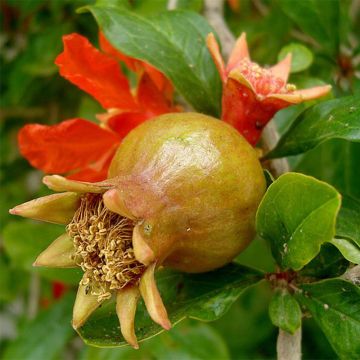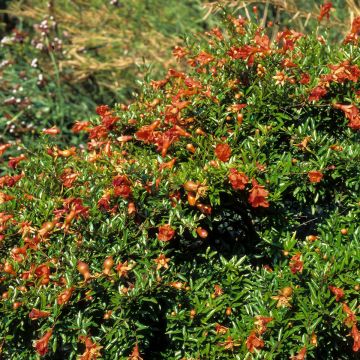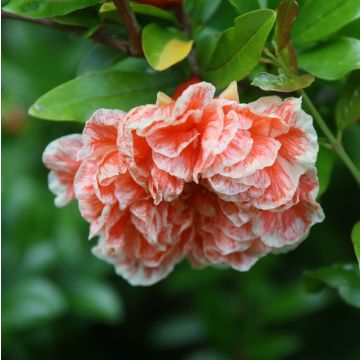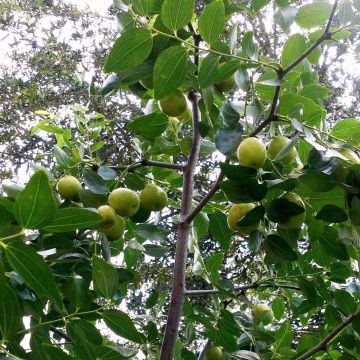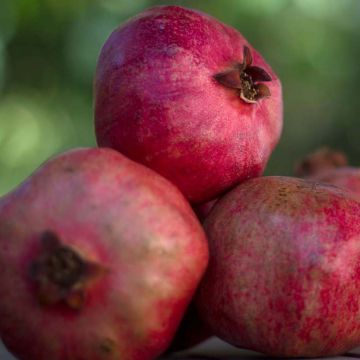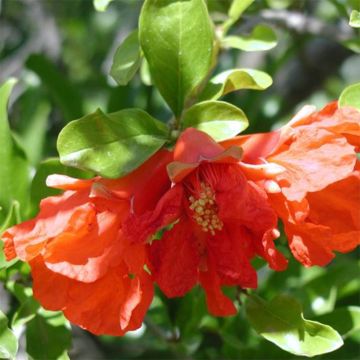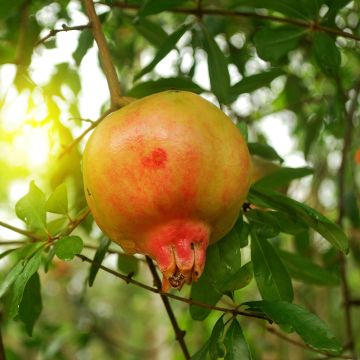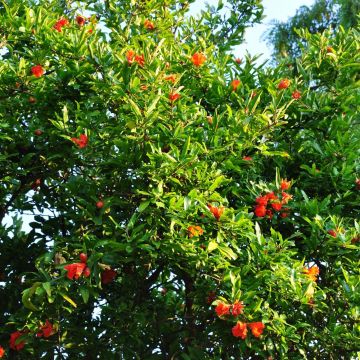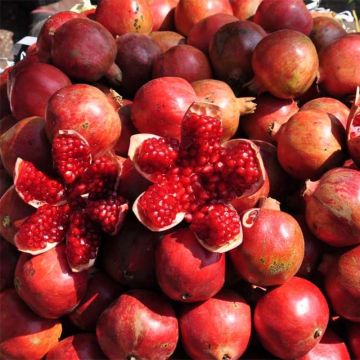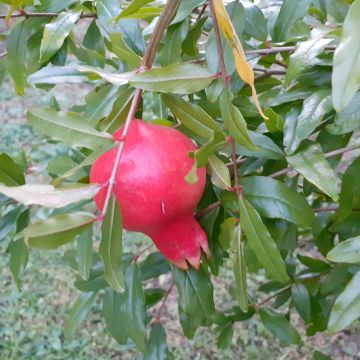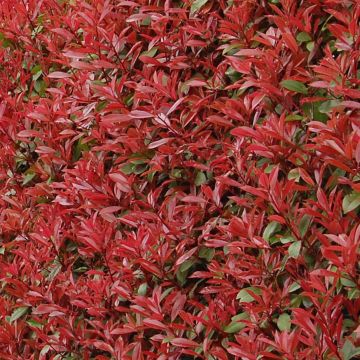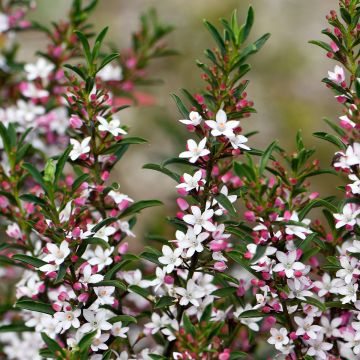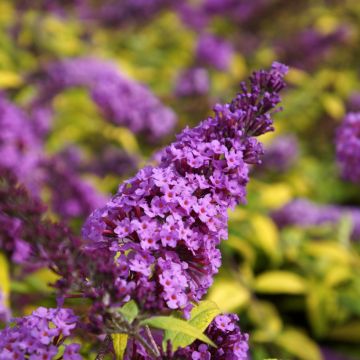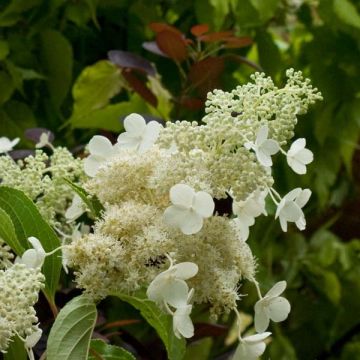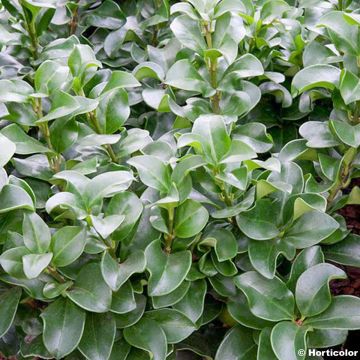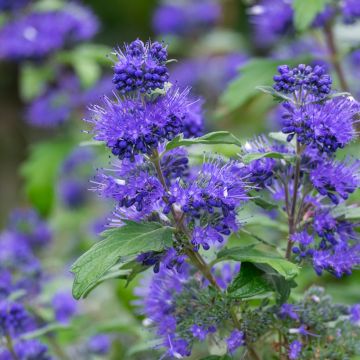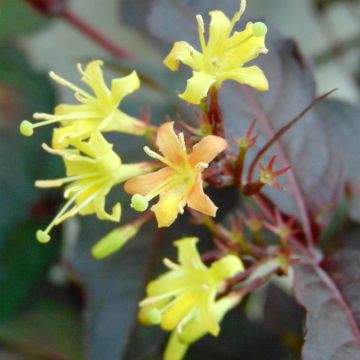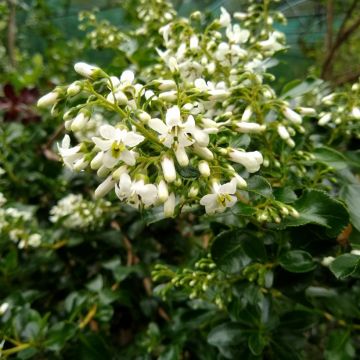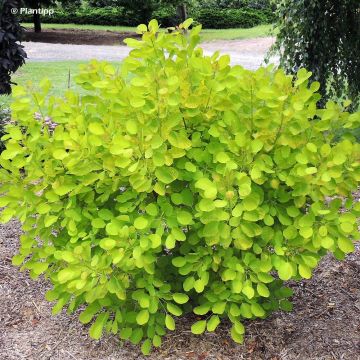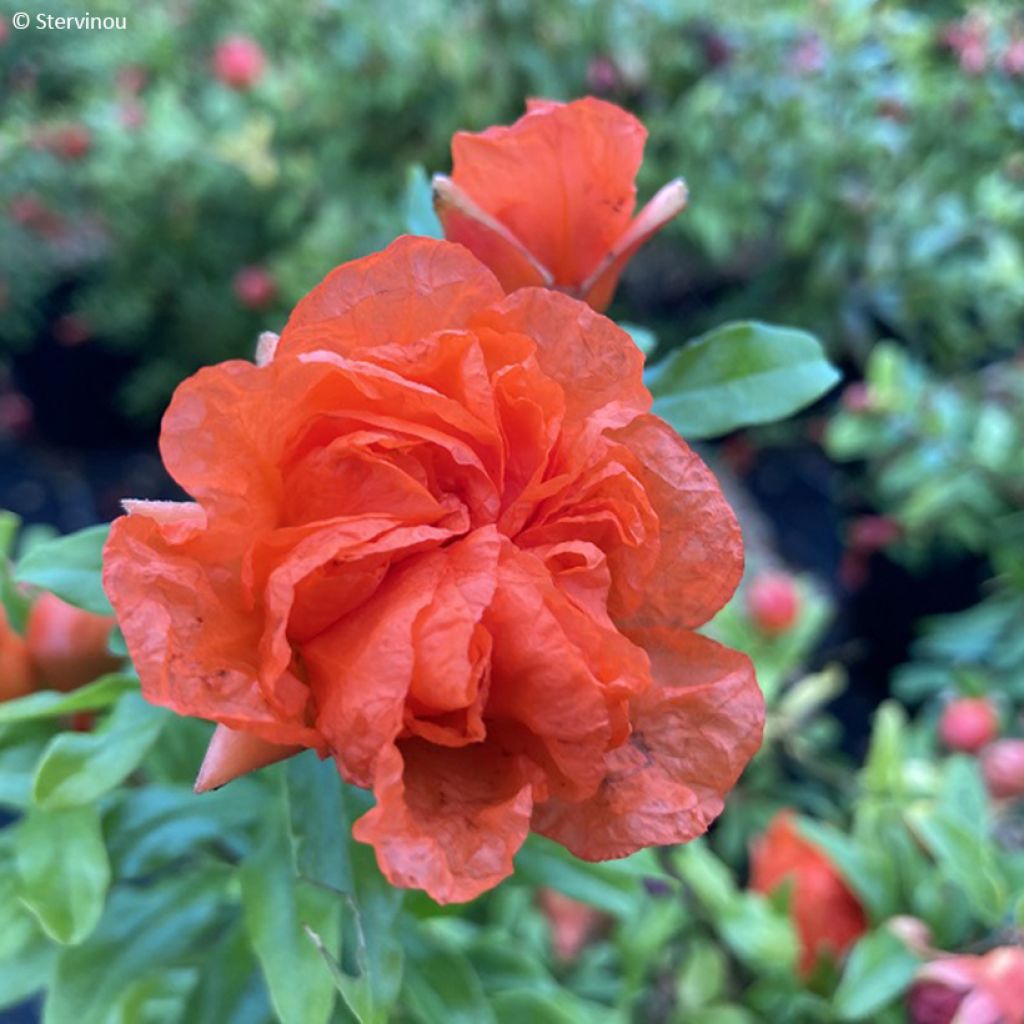

Punica granatum Nana Racemosa - Pomegranate
Punica granatum Nana Racemosa - Pomegranate
Punica granatum Nana racemosa
Pomegranate
This item cannot be shipped to the selected country
Delivery charge from €5.90
More information
Schedule delivery date,
and select date in basket
This plant carries a 24 months recovery warranty
More information
We guarantee the quality of our plants for a full growing cycle, and will replace at our expense any plant that fails to recover under normal climatic and planting conditions.
From €5.90 for pickup delivery and €6.90 for home delivery
Express home delivery from €8.90.
Does this plant fit my garden?
Set up your Plantfit profile →
Description
Punica granatum 'Nana Racemosa' is a small form of Pomegranate that is much less well-known than Punica granatum 'Nana'. Slightly larger than the latter, it is also distinguished by its single, bright red flowers and its long-lasting flowering that produces almost no fruits. Its flowers are perfectly highlighted by glossy light green foliage. It can be grown in a large pot or in the ground and is suitable for all gardeners. It thrives in most regions, as it has excellent resistance to drought and is quite hardy.
The origins of the pomegranate are likely to be in a vast region that covers southeastern Europe and extends eastward to the Himalayas. This deciduous small tree of the lythraceae family is related to the purple loosestrife (Lythrum salicaria) which is so common near watercourses. It has been cultivated since ancient times for its fruits and magnificent flowering.
The 'Nana Racemosa' pomegranate is a compact, bushy cultivar with slow growth reaching between 1m and 1.80m in height and 1m to 1.50m in width depending on the growing conditions. It slowly forms a tangle of tangled, thorny branches, and does not reach maturity until the age of 5. The adult plant develops at a much slower pace, forming a slightly spreading and rounded bush after a few years. Flowering begins in June and continues until September. It will be more or less abundant depending on the climate and sunlight. The single, 3.5 cm wide flowers, are composed of crumpled petals emerging from a thick, waxy-textured calyx. They are intensely red under the summer sun, in perfect chromatic harmony with the bright, shiny light green foliage. This flowering is visited by pollinating insects, but it only produces a few small and insignificant pomegranates. The deciduous foliage consists of small, thick, shiny oval leaves. They emerge bronze to purple in spring and turn yellow before falling in autumn.
The 'Nana Racemosa' pomegranate is a magnificent subject to plant in a large pot on the terrace or in a not very tall hedge. This shrub can be grown in the ground in all regions where temperatures are not likely to drop below -15°C. It will grow without any problems wherever the olive tree and the fig tree can survive. It pairs well with Myrtus communis Tarentina, Mexican orange blossom (Choisya ternata), and Photinia 'Little Red Robin'. It can even be paired with bush roses with clustered flowers in a completely different style, such as 'Astronomia' or 'Matchball'. On the terrace, it will stand out in a large pot, alongside other patio shrubs. This cultivation method allows the tree to be stored over winter in a very bright room in very cold regions.
The city of Granada, a crossroads of Arab and Andalusian civilizations located in southern Spain, owes its name to the presence of the pomegranate, brought by the Moors and planted abundantly in the mythical gardens of the Alhambra palace. This tree also thrived in the hanging gardens of Babylon, and the Romans, who discovered it in Carthage, named it the Apple of Carthage.
Report an error about the product description
Plant habit
Flowering
Foliage
Botanical data
Punica
granatum
Nana racemosa
Lythraceae
Pomegranate
Mediterranean
Other Punica - Pomegranate
Planting and care
Plant Punica granatum 'Nana Racemosa' in spring, when frost is no longer a concern, in a cool region, but in autumn, in a hot and dry climate. Plant it in a very sunny and sheltered location, in deep, well-drained soil, even limestone. While it withstands drought well and tolerates arid conditions, it will only reach its full potential and bloom abundantly in soil that is sufficiently moist at depth. It withstands sea spray well but does not like brackish water seepage. Monitor watering during the first two summers. It will appreciate a compost addition and a thick layer of dead leaves, especially during the first two winters in cold regions. Pruning in early spring is not essential, but it can help to densify this naturally compact small bush.
The pomegranate tree does not have any specific enemies; it is a very robust species. It may be susceptible to scale insects, but generally, garden birds eliminate them without the need for treatment.
Planting period
Intended location
Care
This item has not been reviewed yet - be the first to leave a review about it.
Summer-flowering shrubs
Haven't found what you were looking for?
Hardiness is the lowest winter temperature a plant can endure without suffering serious damage or even dying. However, hardiness is affected by location (a sheltered area, such as a patio), protection (winter cover) and soil type (hardiness is improved by well-drained soil).

Photo Sharing Terms & Conditions
In order to encourage gardeners to interact and share their experiences, Promesse de fleurs offers various media enabling content to be uploaded onto its Site - in particular via the ‘Photo sharing’ module.
The User agrees to refrain from:
- Posting any content that is illegal, prejudicial, insulting, racist, inciteful to hatred, revisionist, contrary to public decency, that infringes on privacy or on the privacy rights of third parties, in particular the publicity rights of persons and goods, intellectual property rights, or the right to privacy.
- Submitting content on behalf of a third party;
- Impersonate the identity of a third party and/or publish any personal information about a third party;
In general, the User undertakes to refrain from any unethical behaviour.
All Content (in particular text, comments, files, images, photos, videos, creative works, etc.), which may be subject to property or intellectual property rights, image or other private rights, shall remain the property of the User, subject to the limited rights granted by the terms of the licence granted by Promesse de fleurs as stated below. Users are at liberty to publish or not to publish such Content on the Site, notably via the ‘Photo Sharing’ facility, and accept that this Content shall be made public and freely accessible, notably on the Internet.
Users further acknowledge, undertake to have ,and guarantee that they hold all necessary rights and permissions to publish such material on the Site, in particular with regard to the legislation in force pertaining to any privacy, property, intellectual property, image, or contractual rights, or rights of any other nature. By publishing such Content on the Site, Users acknowledge accepting full liability as publishers of the Content within the meaning of the law, and grant Promesse de fleurs, free of charge, an inclusive, worldwide licence for the said Content for the entire duration of its publication, including all reproduction, representation, up/downloading, displaying, performing, transmission, and storage rights.
Users also grant permission for their name to be linked to the Content and accept that this link may not always be made available.
By engaging in posting material, Users consent to their Content becoming automatically accessible on the Internet, in particular on other sites and/or blogs and/or web pages of the Promesse de fleurs site, including in particular social pages and the Promesse de fleurs catalogue.
Users may secure the removal of entrusted content free of charge by issuing a simple request via our contact form.
The flowering period indicated on our website applies to countries and regions located in USDA zone 8 (France, the United Kingdom, Ireland, the Netherlands, etc.)
It will vary according to where you live:
- In zones 9 to 10 (Italy, Spain, Greece, etc.), flowering will occur about 2 to 4 weeks earlier.
- In zones 6 to 7 (Germany, Poland, Slovenia, and lower mountainous regions), flowering will be delayed by 2 to 3 weeks.
- In zone 5 (Central Europe, Scandinavia), blooming will be delayed by 3 to 5 weeks.
In temperate climates, pruning of spring-flowering shrubs (forsythia, spireas, etc.) should be done just after flowering.
Pruning of summer-flowering shrubs (Indian Lilac, Perovskia, etc.) can be done in winter or spring.
In cold regions as well as with frost-sensitive plants, avoid pruning too early when severe frosts may still occur.
The planting period indicated on our website applies to countries and regions located in USDA zone 8 (France, United Kingdom, Ireland, Netherlands).
It will vary according to where you live:
- In Mediterranean zones (Marseille, Madrid, Milan, etc.), autumn and winter are the best planting periods.
- In continental zones (Strasbourg, Munich, Vienna, etc.), delay planting by 2 to 3 weeks in spring and bring it forward by 2 to 4 weeks in autumn.
- In mountainous regions (the Alps, Pyrenees, Carpathians, etc.), it is best to plant in late spring (May-June) or late summer (August-September).
The harvesting period indicated on our website applies to countries and regions in USDA zone 8 (France, England, Ireland, the Netherlands).
In colder areas (Scandinavia, Poland, Austria...) fruit and vegetable harvests are likely to be delayed by 3-4 weeks.
In warmer areas (Italy, Spain, Greece, etc.), harvesting will probably take place earlier, depending on weather conditions.
The sowing periods indicated on our website apply to countries and regions within USDA Zone 8 (France, UK, Ireland, Netherlands).
In colder areas (Scandinavia, Poland, Austria...), delay any outdoor sowing by 3-4 weeks, or sow under glass.
In warmer climes (Italy, Spain, Greece, etc.), bring outdoor sowing forward by a few weeks.

































